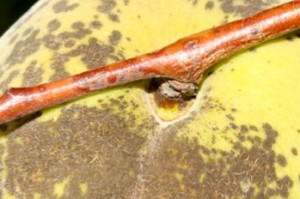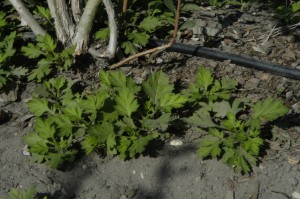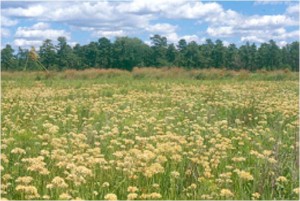 There is a national effort to identify management options for no-spray or organic growers that are trying to manage spotted wing drosophila. If you are an organic grower, please consider filling out this survey to help researchers prioritize areas of research.
There is a national effort to identify management options for no-spray or organic growers that are trying to manage spotted wing drosophila. If you are an organic grower, please consider filling out this survey to help researchers prioritize areas of research.
Organic Grower Survey on Spotted Wing Drosophila
Archives for April 2014
Organic SWD Management Survey
Understanding Fungicide Resistance
Efforts have been made in recent years in New Jersey and the surrounding mid-Atlantic region to help vegetable growers understand and manage potential fungicide resistance development on their farm.
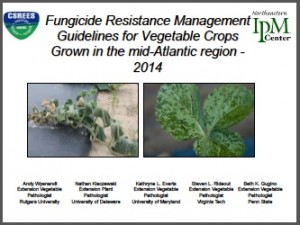 Since 2007, Fungicide Resistance Management Guidelines have been available and distributed to vegetable growers throughout the region. Over, 20,000 FRAC guides have been distributed over the past 8 years at local, state, and regional vegetable meetings and conferences. Much of this work has been funded by the Northeast IPM Center.
Since 2007, Fungicide Resistance Management Guidelines have been available and distributed to vegetable growers throughout the region. Over, 20,000 FRAC guides have been distributed over the past 8 years at local, state, and regional vegetable meetings and conferences. Much of this work has been funded by the Northeast IPM Center.
The 2014 Fungicide Resistance Management Guide can be found on the right sidebar of the Vegetable Crops Online Resource Center and downloaded FREE. In order to understand and use fungicide resistance management strategies effectively one must first understand how and why fungicide resistance may develop. A series of articles is available on this website by clicking the links below.
Growers guide to understanding protectant fungicides (M1-M9)
Growers guide to understanding DMI fungicides (FRAC group 3)
Growers guide to understanding Strobilurin fungicides (FRAC group 11)
Controlling White Mold
White mold, or lettuce drop, caused by Sclerotinia sclerotiorum, has been reported. White mold can cause serious losses in lettuce and other susceptible crops if left uncontrolled.
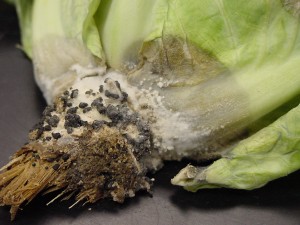
White mold on lettuce. Notice the white fungal growth and black sclerotia developing on the base of the stem. The sclorotia can survive in the soil for up to 10 years.
Fruit IPM Report Apr 22, 2014
This week in Fruit IPMPeach scab lesions on fruit with old lesions on wood.
- Peach
- Apple
- Pear
- Blueberry
- Scouting Calendar
- Trap Counts (Southern Counties)
Stinger Controls Difficult Composite and Legume Weeds in Blueberries
Stinger has been labeled for weed control orchards for years, and now has a label for use in blueberries. The weeds controlled fall into two botanical plant families, composites and legumes.
[Read more…]
Casoron 4G Weed Control in Established Bearing Cranberry Bogs
Casoron will control most annual broadleaf weeds and suppress or control many perennial broadleaf weeds in cranberries, including redroot. Apply Casoron 4G to cranberry bogs after the winter flood has been removed, but before the vines break winter dormancy and begin to grow.
